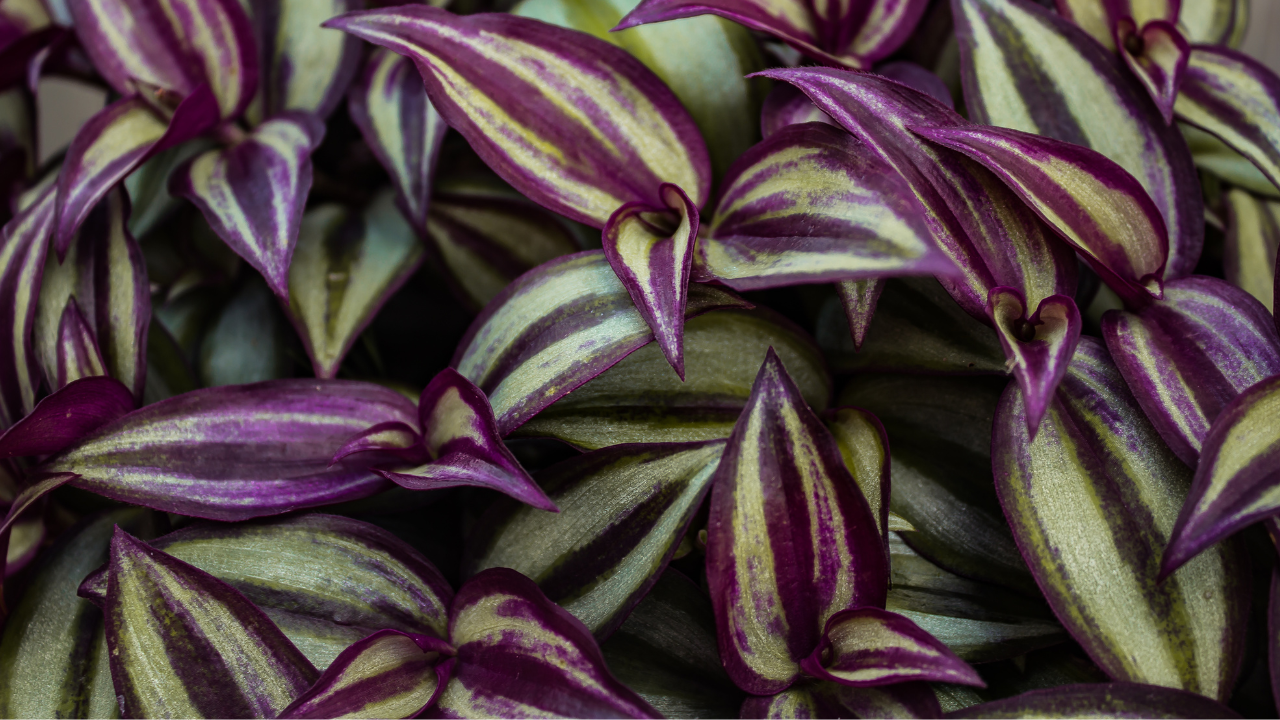The Wandering Jew plant, known scientifically as Tradescantia, is a popular and resilient plant that can thrive both indoors and outdoors. With its striking purple and green foliage, it’s a fantastic addition to any garden. While it’s relatively easy to care for, there are specific considerations to ensure it flourishes outside. Here are ten essential tips to help you care for your Wandering Jew plant outdoors.
1. Choose the Right Location
Selecting the right spot in your garden is crucial for your Wandering Jew plant’s health. These plants thrive in bright, indirect light, so look for a location that gets dappled sunlight throughout the day. Direct sunlight can scorch the leaves, leading to unattractive brown patches.
Additionally, ensure the spot is sheltered from strong winds, which can damage the delicate stems and leaves. If you live in a particularly windy area, consider planting your Wandering Jew in a pot that can be moved to a more protected location when necessary.
2. Soil Preparation
Wandering Jew plants prefer well-draining soil. To achieve this, you can mix regular garden soil with sand or perlite to enhance drainage. This prevents water from accumulating around the roots, which can lead to root rot.
Incorporate organic matter like compost or peat moss into the soil. This enriches the soil with nutrients, ensuring your plant gets the necessary sustenance for healthy growth. Avoid heavy, clay-like soils that retain too much moisture.
3. Watering Practices
Watering is a key aspect of outdoor Wandering Jew plant care. These plants like to stay moist but not waterlogged. Water your plant thoroughly when the top inch of soil feels dry to the touch. It’s important to water at the base of the plant to avoid wetting the foliage, which can lead to fungal issues.
During hot summer months, you might need to water more frequently to keep up with evaporation. In contrast, reduce watering during cooler seasons. Always adjust your watering schedule based on the weather and soil moisture levels.
4. Fertilization
Regular feeding helps Wandering Jew plants maintain their vibrant colors and robust growth. Use a balanced, water-soluble fertilizer every four to six weeks during the growing season, which typically runs from spring to early fall. Dilute the fertilizer to half the recommended strength to avoid over-fertilizing, which can damage the plant.
Incorporate slow-release fertilizers into the soil mix at the beginning of the growing season. This provides a steady supply of nutrients over time, supporting sustained growth and health.
5. Pruning and Maintenance
Pruning helps maintain the shape and encourage bushier growth in Wandering Jew plants. Trim back any leggy or overgrown stems regularly. This not only keeps the plant looking tidy but also stimulates new growth, resulting in a fuller appearance.
Remove any yellow or damaged leaves to prevent potential pest or disease problems. Pruning can also help manage the plant’s spread, as Wandering Jew can be quite vigorous and invasive if not kept in check.
6. Pest Control
While generally hardy, Wandering Jew plants can sometimes attract pests like aphids, spider mites, and whiteflies. Inspect your plants regularly for signs of infestation, such as tiny webs, discolored leaves, or visible insects.
If you notice pests, treat them promptly with insecticidal soap or neem oil. Natural predators like ladybugs can also help keep pest populations in check. Maintaining good air circulation around the plants can reduce the likelihood of pest problems.
7. Disease Prevention
Proper care can minimize the risk of diseases in Wandering Jew plants. Ensure your plant has good air circulation and avoid overhead watering to prevent fungal issues. Root rot is a common problem, so be vigilant about not overwatering and ensuring good soil drainage.
If you notice any signs of disease, such as wilting, yellowing leaves, or mold, take action immediately. Remove affected parts of the plant and treat with appropriate fungicides if necessary. Keeping the garden area clean and free of debris can also help prevent disease spread.
8. Temperature and Humidity
Wandering Jew plants prefer warm temperatures and moderate humidity. They thrive in temperatures between 60-75°F (15-24°C). If you live in a cooler climate, consider growing your plant in a pot that can be moved indoors during cold weather.
High humidity levels are beneficial for these plants. In dry climates, increase humidity by misting the leaves regularly or placing a humidity tray nearby. This helps prevent the leaves from drying out and maintains their vibrant color.
9. Mulching
Applying a layer of mulch around your Wandering Jew plant can help retain soil moisture and regulate temperature. Organic mulches like bark chips or straw are excellent choices. They decompose over time, adding nutrients to the soil.
Mulch also helps suppress weeds, which can compete with your plant for nutrients and water. Make sure to leave a small gap around the stem to prevent rot and pest infestation.
10. Propagation
Wandering Jew plants are easy to propagate, which is great if you want to expand your garden. Simply take cuttings from healthy stems, making sure each cutting has a few leaves. Place the cuttings in water or moist soil, and they will develop roots within a few weeks.
Once rooted, transplant the new plants to their desired locations. Regular propagation not only fills your garden with more of these beautiful plants but also helps manage their growth and prevent overcrowding.
By following these tips, you can ensure your Wandering Jew plant thrives outdoors, adding vibrant color and texture to your garden. Happy gardening!

